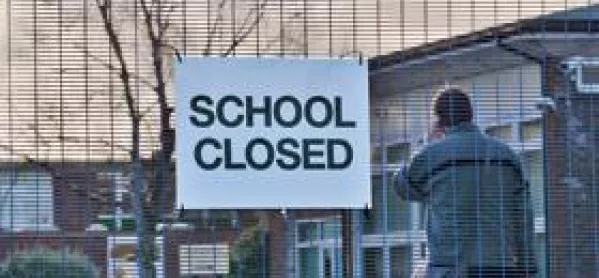EIS rails at staff numbers `stitch-up’

Scotland’s biggest teaching union is on a collision course with government ministers and local authorities after warning of a “stitch-up” over teacher numbers - and it has already hinted that it may resort to industrial action.
The EIS fears that cuts to teaching staff are inevitable and that discussions with the Scottish government and local authorities body Cosla are a “sham”.
The government has insisted, however, that present arrangements regarding teacher numbers may yet be extended.
The EIS has written to deputy first minister and finance minister John Swinney to ask why the government will not earmark funding for its “long-standing policy commitments” on teaching jobs and class sizes.
Teacher numbers have special protection - councils must help to maintain a national pupil-teacher ratio of about 13.5 - but Cosla has previously indicated that the arrangement will not be extended beyond this school year.
Local authorities and education directors have been warning for several months that previously unthinkable savings, such as cutting teaching jobs or closing schools, may be necessary as financial pressures bear down.
Class sizes have increased recently, even with guarantees on teacher numbers - the pupil-teacher ratio rose from 13.5 to 13.6 in a year, it emerged last month. And the EIS has raised concerns over the government’s 2015-16 budget for local authorities.
“The budget settlement, which seemed to grant local authorities licence to attack teacher numbers and increase class sizes, suggests that the Scottish government is willing to abandon key commitments to Scotland’s pupils, parents and teachers,” EIS general secretary Larry Flanagan said.
He was dismissive of Cosla’s argument, made recently in the Scottish Parliament, that “educational outcomes” should become more of a priority than “inputs” such as teacher numbers.
“You cannot will the ends without first providing the means,” Mr Flanagan said, adding that local authorities were already planning “swingeing cuts on teacher numbers”, which, if approved, would be “almost impossible to pull back”.
He questioned whether negotiations between teaching unions, Cosla and the government were based on “good faith”, adding: “The EIS will not be party to sham discussions which simply act as a smokescreen for cuts to teacher numbers to be made.
“Based on the budget settlement and statements from Cosla, it is difficult for teachers to see how the talks can be successful. Inevitably this may lead to discontent, an increased chance of potential dispute and calls for action in defence of education and the rights of pupils and teachers.”
Cosla education spokesman Douglas Chapman insisted that local government was “completely focused” on dealing with educational inequality. “This gap has been present over the years and was just as stark at times when we had more teachers than we currently do today,” he said.
Mr Chapman added that there was “not a council in the land that would want to reduce the number of teachers in schools if it could be avoided”, but said the increase in the national pupil-teacher ratio was “an unavoidable reaction to the financial pressures that all local authority services face”.
Budgetary pressures such as inflation and providing care for an ageing population were increasing, he explained, and “education cannot be immune from that financial reality”.
Government figures released last month showed that the number of full-time teachers in Scotland’s state schools had dropped by 254 in a year, from 51,078 to 50,824. A spokesman told TESS that if the government could not reach agreement with unions and Cosla on “a broader range of educational outcomes”, the existing commitment on teacher numbers would remain.
Last week, education secretary Angela Constance announced that about pound;2 million would be provided for an extra 250 student-teacher places in universities in 2015-16.
“This government has been successful at addressing teacher unemployment and stabilising teacher numbers over the last few years,” she said, adding that it was a priority “to maintain teacher numbers in line with pupil intake”.
Keep reading for just £1 per month
You've reached your limit of free articles this month. Subscribe for £1 per month for three months and get:
- Unlimited access to all Tes magazine content
- Exclusive subscriber-only stories
- Award-winning email newsletters



